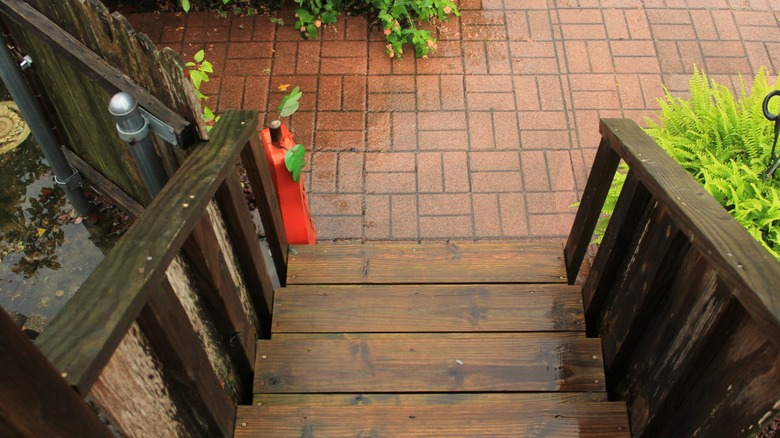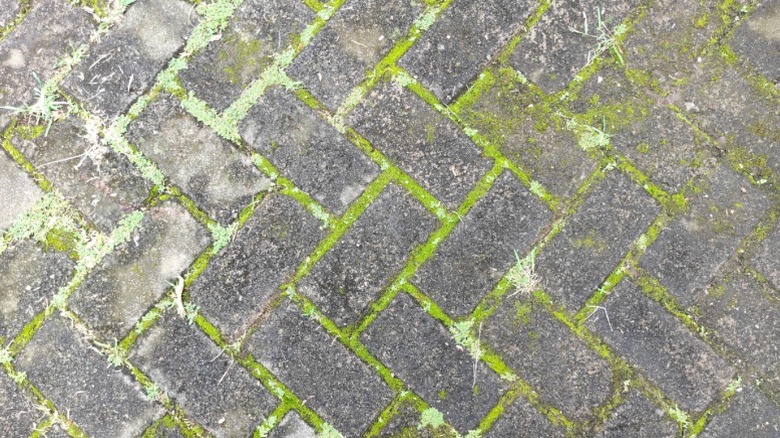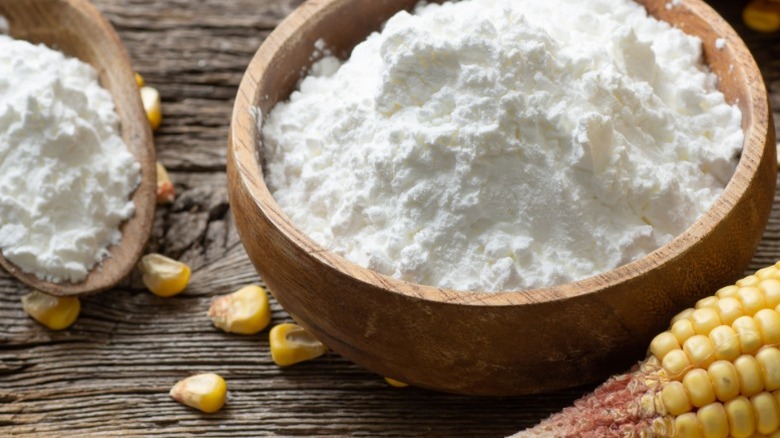The Kitchen Essential That Will Prevent Slippery Patio And Garden Pathways
Drying out your patio sounds easy enough: let the sun do its thing while you sip an iced tea. But shady spots and clingy humidity have other plans. If your sprinkler system runs a little too often, you might as well hand algae a welcome mat and a spare key.
One of the more surprising unconventional uses for cornstarch around the house involves heading outdoors. This humble kitchen essential quietly soaks up the surface dampness that turns patios and gardens into slip-and-slide traps. It won't dethrone the algae kingdom in a day, but it can make their reign a whole lot less comfortable. Also, cornstarch breaks down naturally, making it safe for plants, though curious pets might investigate it like a mystery snack. It's much gentler than bleach and far easier than breaking out the pressure washer again. Plus, it's versatile; you probably already have it on hand for thickening sauces or baking.
Why outdoor hardscapes stay slippery
Patio flooring gets dangerously slippery when wet, especially if you've got concrete, brick, or stone underfoot. These materials don't absorb water like soil, so moisture lingers on the surface instead of seeping away. Even a thin layer of water can make footing treacherous, particularly for kids, pets, or someone carrying a tray of drinks.
Moisture alone is enough to cause trouble, but shade takes it up a notch. Without direct sunlight, damp areas stay wet longer, creating a perfect environment for algae, lichens, liverworts and mosses to thrive on hard surfaces. These growths grip onto the surface, forming a slimy layer that's not only unsightly but also a serious slip hazard. Once they're established, they can be stubborn to remove, often requiring a lot of scrubbing or a pressure washer. It's this combination — persistent dampness and opportunistic growth — that makes certain areas of your patio or garden path high-risk zones. Left untreated, they can turn your outdoor space into a year-round obstacle course.
How to use cornstarch to prevent slippery spots
To dry out those slippery trouble spots, start by sweeping away leaves, dirt, and debris (make sure the surface is damp, not soaked). Then, lightly sprinkle cornstarch over the area, just enough to absorb moisture without leaving a powdery mess. For best results, reapply after heavy rain or on extra-humid days when the air feels thick and sticky.
While cornstarch helps control moisture day-to-day, it's not a fix for chronic drainage problems or seriously shady spots. To keep your outdoor spaces truly safe and dry, combine this garden essential with bigger fixes like redirecting gutter runoff, trimming overgrowth, or switching to more porous paving materials that help water drain naturally. Still, affordable and easy to apply, cornstarch deserves a permanent spot in your garden toolkit; a simple, low-stress way to help prevent slips and falls around your home. This kitchen essential might just become your secret weapon for safer, drier patios all year round.


